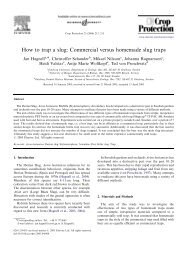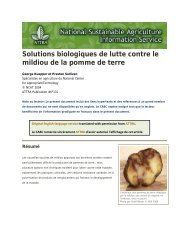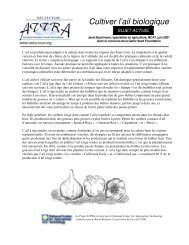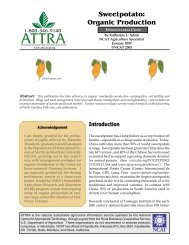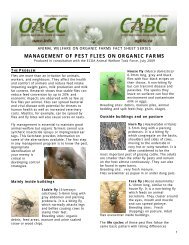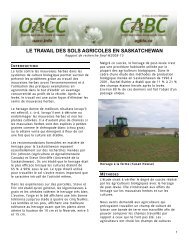Recommended Animal Handling Guidelines and Audit Guide
Recommended Animal Handling Guidelines and Audit Guide
Recommended Animal Handling Guidelines and Audit Guide
- No tags were found...
You also want an ePaper? Increase the reach of your titles
YUMPU automatically turns print PDFs into web optimized ePapers that Google loves.
<strong>Recommended</strong> <strong>Animal</strong> <strong>H<strong>and</strong>ling</strong> <strong><strong>Guide</strong>lines</strong> <strong>and</strong> <strong>Audit</strong> <strong>Guide</strong> 2007 EditionBelow are the signs of a properly stunned animal: The legs may kick, but the head <strong>and</strong> neck must be loose <strong>and</strong> floppy like a rag.A normal spasm may cause some neck flexing, generally to the side, but the neckshould relax <strong>and</strong> the head should flop within about 20 seconds. Check eye reflexes ifflexing continues. <strong>Animal</strong>s stunned with gas stunning equipment should be completelylimp <strong>and</strong> floppy, though animals may exhibit slow limb movement <strong>and</strong> gasping. The tongue should hang out <strong>and</strong> be straight <strong>and</strong> limp. A stiff curled tongue is a signof possible return to sensibility. If the tongue goes in <strong>and</strong> out, this may be a sign ofpartial insensibility. For all methods of stunning, when the animal is hung on the rail, its head should hangstraight down <strong>and</strong> the back must be straight. It must NOT have an arched back rightingreflex. When a partially sensible animal is hung on the rail it will attempt to lift upits head. Sometimes the head will flop up momentarily when a back leg kicks. Thisshould not be confused with a righting reflex. When captive bolt is used, the eyes should be wide open with a blank stare. Theremust be no eye movements. Immediately after electrical stunning, the animal willclamp its eyes shut, but they should relax into a blank stare. When captive bolt is used, the animal must NEVER blink or have an eye reflex inresponse to touch. In electrically stunned pigs, eye movements can be misinterpretedwhen untrained people indiscriminately poke at the eyes. It is often best to observewithout touching the eye. For all stunning methods if the animal blinks with a naturalblink where the eye closes <strong>and</strong> then re-opens, it is not properly stunned. If you are notsure what a natural blink looks like, look at live animals in the yards (lairage) beforeassessing insensibility. Rhythmic breathing must be absent. Intermittent gasping is a sign of a dying brain<strong>and</strong> is acceptable. A twitching nose (like a rabbit) may be a sign of partial sensibility. In captive bolt-stunned animals, insensibility may be questionable if the eyes arerolled back or they are vibrating (nystagmus). Nystagmus is permissible in electricallystunned animals, especially those stunned with frequencies higher than 50 to 60 cycles. Shortly after being hung on the rail, the tail should relax <strong>and</strong> hang down. No response to a nose pinch. When testing for response to a painful stimulus thepinch or prick must be applied to the nose to avoid confusion with spinal reflexes.<strong>Animal</strong>s entering a scald tub must not make a movement that is in direct response tocontact with the hot water. For all types of stunning, this is an indicator of possiblereturn to sensibility.33AMI<strong>H<strong>and</strong>ling</strong>Slaughter<strong><strong>Guide</strong>lines</strong>07.1AMIJune 11, 2007




